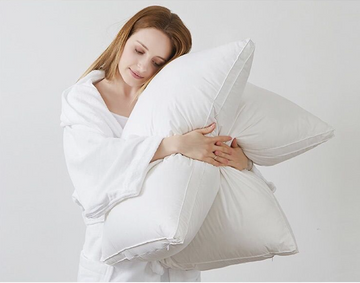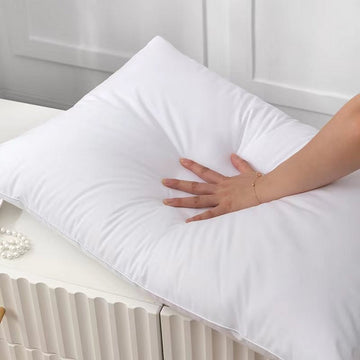Understanding the Science of Comfort: Quilts vs. Comforters
The Role of Material and Fabric in Quilts and Comforters
When choosing between quilts and comforters, the fabric type matters. Quilts often use natural fibers like cotton. This makes them breathable and cool to the touch. Comforters might have synthetic fills. These can trap more heat, making them less cool than quilts. The weave and weight also play a part in comfort. Loose weaves in quilts allow for air flow. Dense fills in comforters can feel warmer. Pick a quilt for cooler sleep or a comforter for more warmth.

Evaluating the Thermal Efficiency of Quilts and Comforters
When deciding if quilts or comforters are cooler, consider their heat handling. A quilt's thinner layers may offer less heat retention, making it cooler to the touch. Comforters often have more bulk, trapping more heat. Yet, the fill type in comforters impacts warmth too. Natural fills can wick away moisture, while synthetic fills may retain heat. To gauge the cooler option, factor in the fill and thickness of these bedding types.
The Impact of Airflow on Comfort and Cooling Effectiveness
When it comes to staying cool, airflow plays a key role in your bedding choice. Quilts, with their lighter weight and thinner layers, often allow for better air circulation. This can make them more comfortable in warmer climates or for those who tend to sleep hot. Comforters, by contrast, are typically thicker and may retain heat due to dense filling materials like down or synthetic fibers. However, some comforters are designed with breathable fabrics and moisture-wicking properties to help regulate temperature. Choosing bedding that promotes good airflow can help enhance your sleep quality, keeping you cool and comfortable throughout the night.
Practical Considerations for Making Your Decision
Assessing the Durability and Longevity of Quilts and Comforters
When choosing bedding, think long-term. Ask how long will it last? Quilts often last longer. They are hand-stitched, making them hardy. Comforters may lose shape faster. They often have less robust stitching. But, some modern comforters are built to last. Check the warranty for a clue. Consider materials too. Cotton quilts age well. Synthetic comforters may wear down sooner. Yet, some are designed for durability. Always check the care label. It tells you how to keep them in good shape. So, weigh durability against cost. Decide what's best for you.
The Cost-Effectiveness of Investing in Quilts vs. Comforters
When picking between quilts and comforters, cost matters. Here's how to choose wisely:
- Look at upfront costs. Quilts can be cheaper than comforters.
- Think long-term. Comforters may last longer, which means less frequent replacing.
- Check care costs. Dry cleaning comforters can add up, while quilts often cost less to maintain.
- Consider use. If you change bedding with seasons, comforters might be better despite higher prices.
Overall, quilts may win for short-term savings. But comforters could be more cost-effective over time.
Installation and Maintenance: Quilts and Comforters Compared
When debating quilt versus comforter, think about upkeep. Here's what you need to know:
- Quilts are often easy to handle; they can be machine washed and dried. This makes them low-maintenance.
- Comforters may need special care. Some are too bulky for standard washers, requiring a trip to the laundromat or dry cleaners.
- For installation, both are user-friendly. You spread them over your bed, and you're set.
- If you often change your bedding, know that comforters are heavier. Quilts can be more convenient to swap out.
- Remember the ease of repair. Quilts can be simpler to mend due to their patchwork nature.
Choose what fits your lifestyle better. Both have their own set of maintenance needs.
The Future of Bedding: Innovations and Consumer Trends
The Advent of Smart Quilts and Comforters
The bedding industry is seeing exciting changes. Brands are now making 'smart' quilts and comforters. These use tech to adjust to your body temp for better sleep. They might have sensors to manage heat or apps to track sleep patterns. This means better control over your comfort at night. They could even link to other smart home devices. This trend is growing as more people want tech to boost their wellbeing. Look out for smart bedding that talks to your thermostat or tracks sleep health in the future.
Eco-Friendly Materials in Quilt and Comforter Manufacturing
The trend towards eco-friendliness has reached the bedding industry. Manufacturers are now using green materials for quilts and comforters. These materials include organic cotton, bamboo fibers, and recycled polyester. They offer benefits like biodegradability and lower carbon footprints. Consumers can enjoy comfort with a reduced environmental impact. Companies also adopt sustainable practices in production. They save energy and reduce waste. This shift highlights the growing awareness and demand for sustainable living options.
Consumer Demand for Customization in Bedding Products
Customization is key in modern bedding trends. Consumers now seek options that reflect their style and meet specific needs. Bedding products are evolving to offer a wide range of custom choices. Personalized sizes and designs are gaining popularity. Some brands now allow customers to select materials and create bespoke bedding sets. This shift towards made-to-order quilts and comforters is reshaping the industry. An increased focus on individual preferences highlights the importance of personal comfort. Custom bedding also supports varied aesthetic tastes and unique bedroom themes. As the market grows, so does the variety of customized bedding options available.






